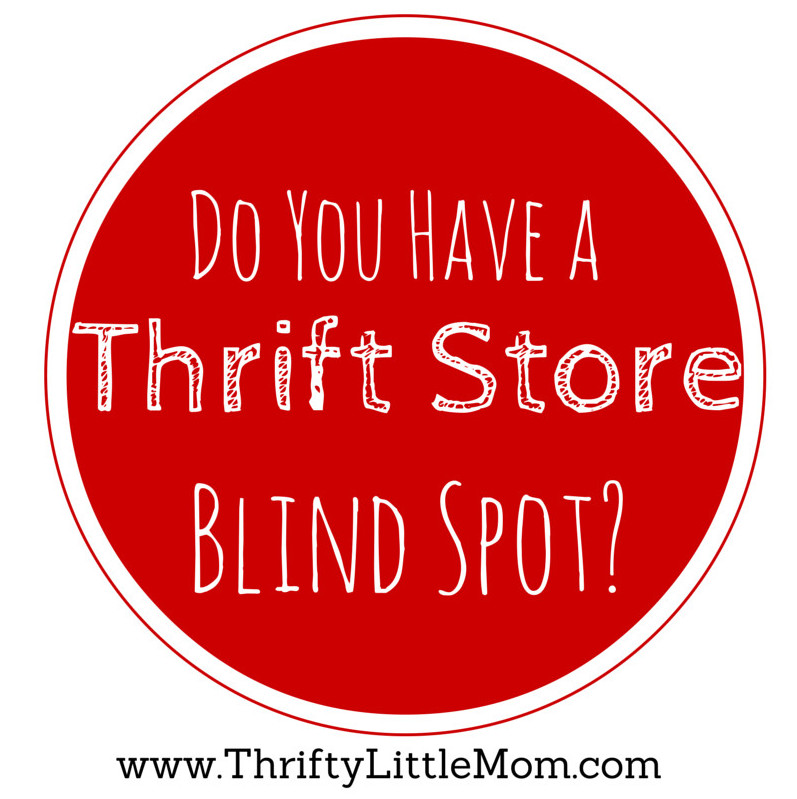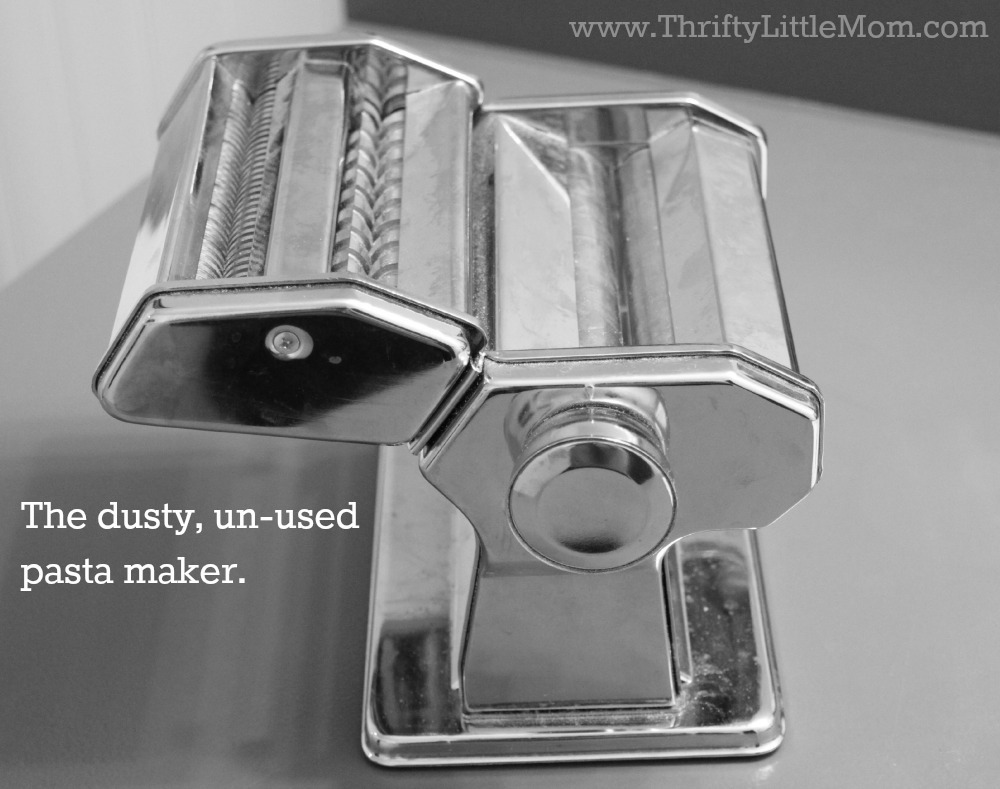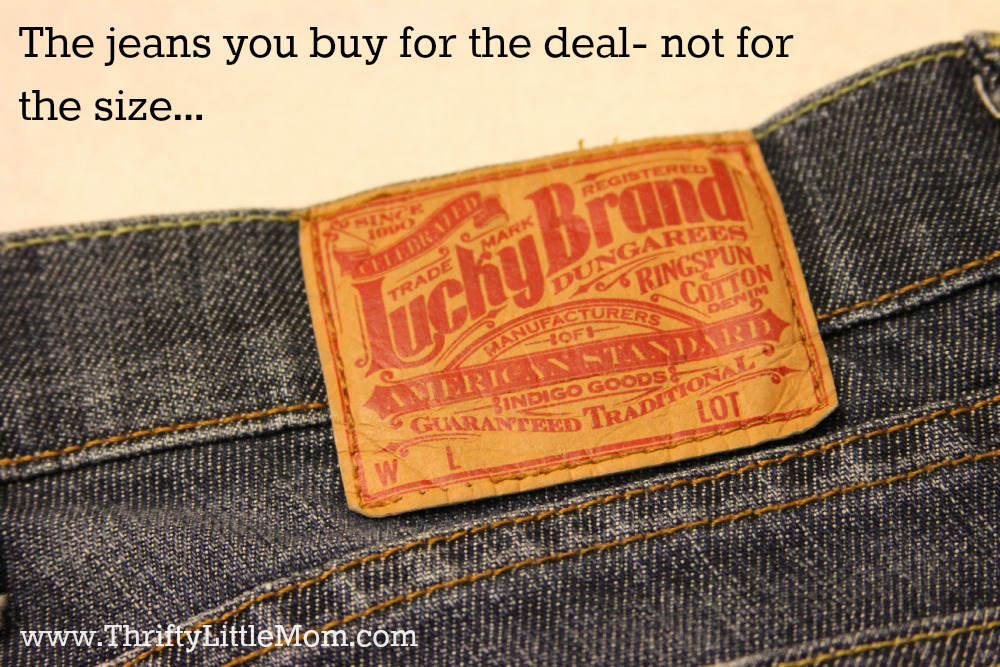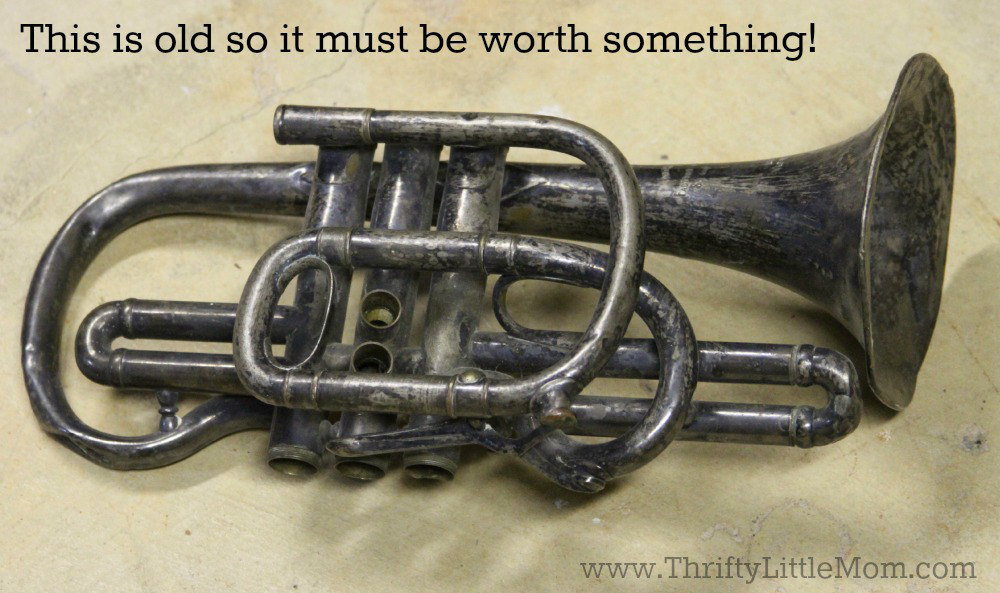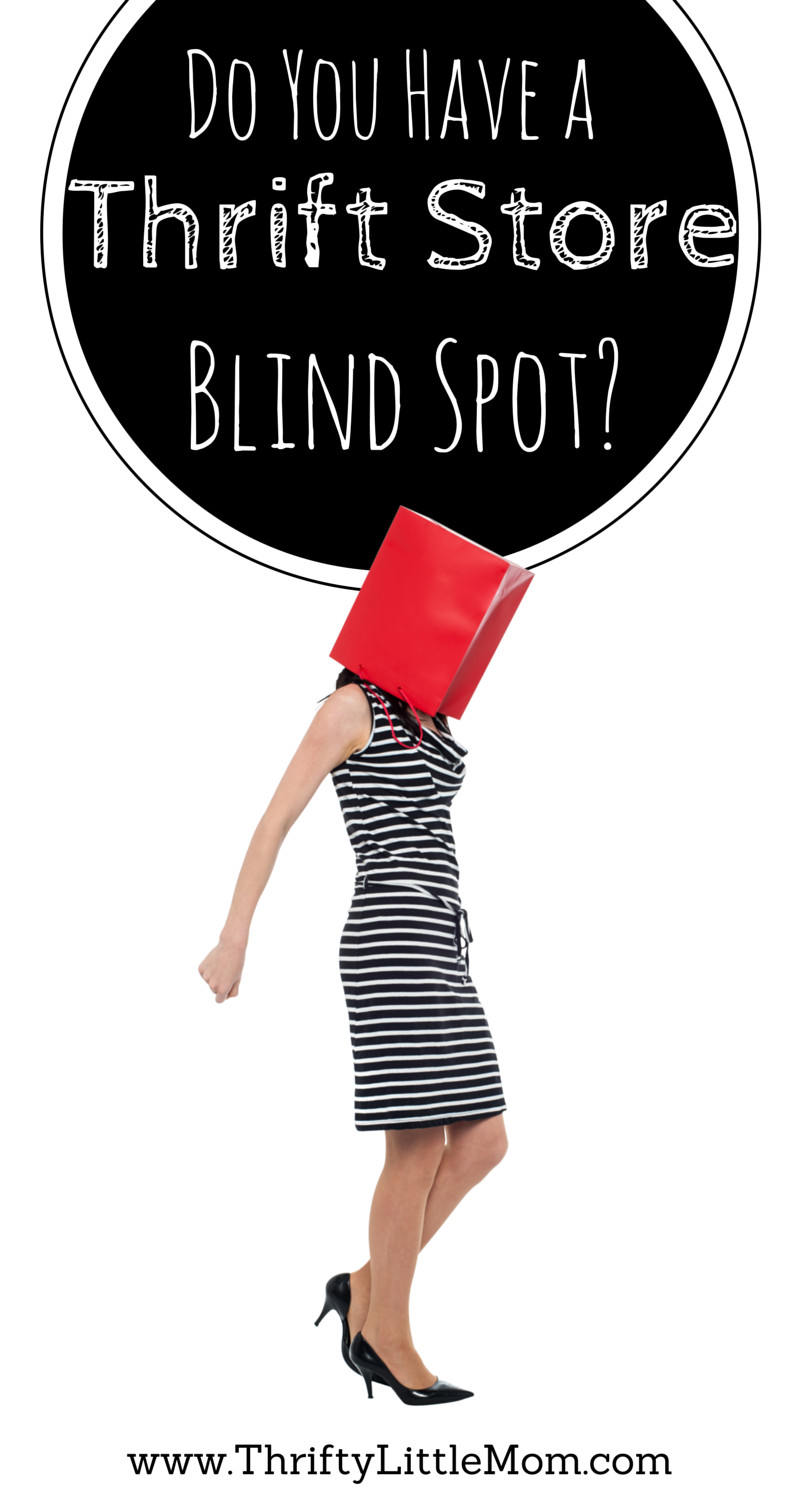Do You Have a Thrift Store Blind Spot?
You’re happily wandering down the housewares aisle at your local thrift store when you spot a gorgeous, Crate and Barrel serving platter! Knowing the original retail price, you snatch that baby up. You can’t wait to tell your friends. Now is one of those times that you wished you could figure out Twitter because this is a brag-worthy, hashtaging kind of moment.
If you are anything like me, you get a rush from finding things that would normally have a high retail cost for only a few dollars at thrift stores. These types of finds can create what I like to call, thrift store blind spots- when ridiculously low prices obstruct our view of reality.
The truth is that even though some things ARE AMAZING DEALS- We. Just. Don’t. Need. Them.
This is part of the reason that I’ve stopped going into thrift stores if I’m not looking for something specific. This past week I went shopping for shorts because I literally didn’t have any and we are taking a Florida vacation. I know that the thrift store will have shorts and they should have lots of options in my size. And even though I know that some of those options will be those early ’90s super, high-waisted, mom jean, cut off shorts that are coming back in style, you won’t see any of them in my cart. I went in with a plan and I came out with just enough shorts for my trip.
Was I tempted? Sure. I have a weakness for adorable vintage dishes…and kids hardback books…and unique jewelry. How do I manage my blind spot tendencies? Here are five ways I do it and so can you.
1. Don’t Go Where You Don’t NEED to Go
If you don’t need a new plate, mug or serving dish- just don’t go down that aisle. It’s tempting to buy stuff simply because the price tag is so low but you aren’t doing your budget or your storage space any favors.
Right now, I have a pasta maker under my counter because the price tag said $2.99 and I saw it 1 week before at a regular retail store for $40. Do I make pasta with it? Nope. Am I going to resell it? Maybe one day. How long has it been there? 3 years. Based on the evidence, did I need that pasta maker? Nope.
2. When In Doubt, Leave it Out
This is a statement that I use when thrift store shopping with my mother-in-law. She’ll pick up a clothing item that she thinks is cool but isn’t sure if it fits, if it’s really her style or where she will wear it. We’ve learned over time to develop a love it or leave it approach to thrift store shopping.
3. Ban “Goal Clothes” Shopping From Your Life- FOREVER
Let’s just say you were find a pair of Lucky Brand jeans (hand raised) in perfect condition that are a size that you have worn in your lifetime. They are $4.99. You rationalize that even though they are 3 sizes smaller than you currently wear, you are going to get them simply because they can motivate you to lose weight and then you imagine yourself victoriously sliding into them. That’s a total waste. If you lose 3 dress sizes, you need to take your tinier behind down to the Lucky store and celebrate with a NEW pair of jeans.
Ladies and gentlemen, let’s unite to stand against closets full of thrift store goal clothes. Let’s decide that if we need it, it’s in our size and it’s the price we want to pay, we will take it home with us.
4. Avoid “It Might Be Worth Something” Rationalizations
So many times in my life I have bought something really old and really cool because I thought it was worth something. If I had only taken 30 seconds and looked the item up on Ebay on my smartphone, I might have seen that there were 35 of them parked on Ebay with 0 bids for $1 less than I was about to pay.
Unless you are a person who has a side business re-selling goods online or in antique stores I would consider steering clear of this mindset. Do your research. Don’t blindly buy things on the basis that you think it’s old or valuable. It’s probably not.
I understand that it may not be your fault for having this mindset. After a marathon of American Pickers, Pawn Stars or Antique Roadshow you might find yourself thinking you’re an expert.
Again, this is all coming from experience.
I’ve got an ugly antique bugle (as pictured below) sitting in my basement right now that I thought was going to bring me hundreds of dollars and I’ve come to find out it’s worth the $1.99 I paid for it!
The Real Danger With Blind Spots
When you love thrifting, it can almost become addicting. If you only knew how true this is for me! The trouble comes when we spend hundreds of dollars in a month and feel really good because we got SO MUCH stuff for very little. Ultimately, we are adding clutter to our homes and draining our budgets. The key is to keep your eye on the prize and only go into thrift stores when you are on a particular mission. Don’t get distracted. Shop like a man. Get in, get what you need, get out and save some money.
What’s your thrift store blind spot?

Kim Anderson is the organized chaos loving author behind the Thrifty Little Mom Blog. She helps other people who thrive in organized chaos to stress less, remember more and feel in control of their time, money, and home. Kim is the author of: Live, Save, Spend, Repeat: The Life You Want with the Money You Have. She’s been featured on Time.com, Money.com, Good Housekeeping, Women’s Day, and more!

